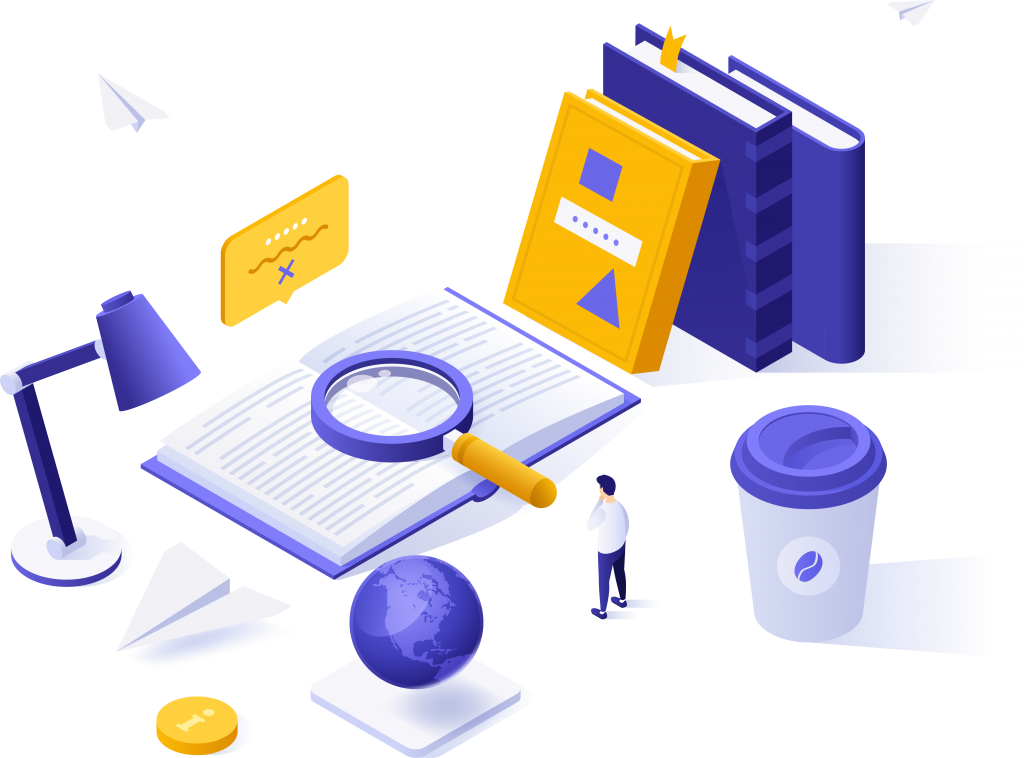Of course, most salespeople are aware that asking good questions is necessary to understand the needs of the prospect or customer.
What is the most perfect approach for this?
First, the salespeople should ask open-ended questions. These start with who, what, when, why or how.
This ensures that prospects or customers will answer more extensively. For example, if you only ask closed questions, you will only get a yes or no. With these answers you can experience less what is going on with the prospect or customer.


It is very important to immerse yourself in the customer. Without this knowledge, it is difficult to ask substantive questions. So preparation is everything! Go deep into your customer beforehand and ask yourself some relevant questions about the sector or the position of the prospect. It not only makes this process more efficient, but also comes across as good.
It has happened to everyone that customers can be vague. This is obviously bad if you want to obtain information during a sales conversation.
You can get more information from customers by asking plug-in questions. What is this?
In concrete terms, you will ask for clarification when you ask questions.
Example :
Customer : ‘In general, apart from some minor flaws, we are quite satisfied with our current system.’
Salesperson : ‘Little minuses, what do you mean?’
You can do it even shorter, repeat the gist of what the other has just said in interrogative form ‘Small minuses?’ You reflect in a questioning tone what the other person just told you. You can of course also add:
“Can you tell me more about that?”
Another example:
Customer : ‘A few months ago we were almost done with another supplier, but that fell through at the last minute…’
Salesperson : ‘What was the reason for this?’

The answer to these questions is the starting signal for many sellers to start talking about the many benefits of their product. Prevent this! First, these benefits for customers are rarely the reason for switching suppliers. You must first analyze the need further and respond to the negative consequences of the pain point that the customer is experiencing.
Asking hook-in questions opens new doors that would otherwise remain closed. This all sounds very logical, yet many sellers miss out on these opportunities. Instead of asking these kinds of questions, they assume things. They assume they already know the answer. You should NEVER do this! NEVER ASSUME.
Make sure that your needs analysis with the customer does not come across as an interrogation. What can you do to prevent this? Watch out for situation questions! This is asking for facts and circumstances. Of course the answers are useful for the seller, but for the customers these questions have already been asked many times and is repeated for the umpteenth time.
Hook-in questions come in handy here too. In order not to give the prospect or customer the feeling that they are being questioned, you can ask questions. People answer this almost automatically, because you give them the opportunity to provide further explanation.

Don’t start explaining your question after asking. Here it can happen differently that the prospect or customer then asks: ‘What did you actually want to know?’
Keep your mouth shut and stop speaking after asking your question. Resist the temptation to put an answer in the customer’s mouth when the silence lasts longer. This can come across as quite manipulative and you run the risk of telling him/her the wrong answer.
When you ask for confidential or sensitive information, it is wise to give a reason for your question.
For example: ‘To be able to make a correct calculation of your pension, it is necessary to know how much you earn now. We can then make a comparison with the income you will receive after retirement and in this way determine whether you are short of something. Can you therefore indicate how much you earn now?’
You put answers in the mouth of the prospect or customer from which he/she has to choose. If none of these answers are relevant, they should come up with something. This makes it difficult for them and often they will choose an answer most suitable, with which you obviously do not know much more.
Pay attention to the customer’s facial expression/position when he answers. Non-verbal signals sometimes say much more than what they literally say to you.
For example: when answering a question about deliveries, you can clearly see that something is not pleasant with the prospect or customer. Inquire about this! This way you can uncover interesting information that you can use in your value proposition!
Open questions
In a specific context, open and closed questions can take on a special meaning.
So the operational unit is located in the middle of the port of Antwerp?
Do you prefer a temporary cheap solution or do you prefer a sustainable solution?
Customer: What are your shortest delivery times?
Seller: What quantities are we talking about then?
Or better: To help you further, we can even deliver from our stock within three days. What quantities would you like to order?
There is also a universal counter-question: Is this important to you?
Salesperson: Suppose you had to press the emergency stop in your production, what would be the consequences?
Salesperson: We could of course ask ourselves: how are your customers going to react to this? But let’s leave that aside.
Seller: Did I explain that clearly?
Seller: Was that an answer to your question?
Salesperson: And who are your customers?
Client: Mainly banks and insurance companies.
Seller: And the department stores too, right?
Customer: Yes, of course, they also use our electronic payment systems.
Seller: So you mean Carrefour, Delhaize…?
Customer: Yes, everyone. Nowadays you can pay electronically everywhere.
Seller: And retailers who pay electronically, aren’t those also potential customers for you?
Customer: Yes indeed, in fact all companies that can accept payment electronically are potential customers for us.
Seller: That’s almost all SMEs, if you take the future developments in the field of electronic payments into account?
Customer: Yes, you could put it that way.
Seller: So is your ultimate target audience very large?
Customer: Yes.
The example above concerns the sale of advertising space. The larger the customer’s target audience, the more meaningful publicity in a national medium becomes. Initially, the customer limits his target group to banks and insurance companies. With leading questions, the seller has broadened this picture significantly.
With all these questions you can already collect a lot of information from the prospect or customer. Now it’s up to you! Do you have questions for us? Do not hesitate to get in touch!
Natuurlijk zijn de meeste verkopers zich bewust van het feit dat goede vragen stellen nodig is om de behoeftes van de prospect of klant te achterhalen.
Wat is hiervoor de meest volmaakte aanpak?
Ten eerste moeten de verkopers open vragen stellen. Deze beginnen met wie, wat, wanneer, waarom of hoe.
Dit zorgt ervoor dat prospects of klanten uitgebreider gaan antwoorden. Als je bijvoorbeeld enkel gesloten vragen gaat stellen, dan krijg je enkel een ja of nee. Met deze antwoorden kun je minder ondervinden wat er speelt bij de prospect of klant.


Het is zéér belangrijk om je te gaan verdiepen in de klant. Zonder deze knowledge is het moeilijk om inhoudelijk goede vragen te stellen. Dus voorbereiding is alles! Ga op voorhand je gaan verdiepen in je klant en zorg voor enkele revelante vragen omtrent de sector of de functie van de prospect. Het maakt dit proces niet enkel efficiënter, maar komt ook goed over.
Het is iedereen al overkomen dat klanten vaag kunnen zijn. Dit is uiteraard slecht als je informatie wilt bekomen tijdens een verkoopgesprek.
Je kunt meer informatie verkrijgen bij klanten door inhaakvragen te gaan stellen. Wat is dit?
Concreet ga je bij inhaakvragen om verduidelijking gaan vragen.
Voorbeeld:
Klant: ‘Over het algemeen zijn wij op wat kleine minpuntjes na, best tevreden over ons huidige systeem.’
Verkoper: ‘Kleine minpuntjes, hoe bedoelt u?’
Je kunt het nog korter doen, herhaal de kern van wat de ander zojuist heeft gezegd in vragende vorm ‘Kleine minpuntjes?’ Je kaatst op vragende toon terug wat de ander je zojuist vertelde. Je kunt er natuurlijk ook aan toevoegen:
‘Kunt u daarover iets meer vertellen?’
Een ander voorbeeld:
Klant: ‘Een paar maanden geleden waren wij bijna rond met een andere leverancier, maar dat is toen op het laatste moment afgeketst…’
Verkoper: ‘Wat was hiervoor de reden?’

Het antwoord op deze vragen is voor veel verkopers het startschot om te beginnen praten over de vele voordelen van hun product. Voorkom dit! Ten eerste zijn deze voordelen voor klanten zelden de reden om over te gaan stappen op een andere leverancier. Je moet eerst de behoefte verder gaan analyseren en gaan inspelen op de negatieve gevolgen van het pijnpunt die de klant ervaart.
Het stellen van inhaakvragen opent nieuwe deuren die anders gesloten blijven. Dit klinkt allemaal zeer logisch, maar toch laten veel verkopers deze kansen onbenut. In plaats van deze soort vragen te stellen nemen ze dingen aan. Ze veronderstellen het antwoord al te weten. Dit mag je NOOIT doen! NEVER ASSUME.
Zorg dat je behoefteanalyse bij de klant niet overkomt als een verhoor. Wat kan je doen om dit te voorkomen? Opletten voor situatievragen! Dit is vragen naar feiten en omstandigheden. Uiteraard zijn de antwoorden nuttig voor de verkoper, maar voor de klanten zijn deze vragen al veel gevallen en is voor de zoveelste keer herhalen.
Ook hier komen inhaakvragen weer te pas. Om de prospect of klant niet het gevoel te geven dat ze verhoord worden, kun je inhaakvragen stellen. Mensen geven hierop vrijwel automatisch een antwoord, omdat je ze de kans geeft om verdere toelichting te geven.

Begin je vraag niet toe te lichten na het stellen. Hier kan het anders gebeuren dat de prospect of klant vervolgens vraagt: ‘Wat wilde u nu eigenlijk weten?’
Houd je kaken op elkaar en stop met spreken na het stellen van je vraag. Weersta de verleiding om de klant, wanneer de stilte langer duurt, een antwoord in de mond te leggen. Dit kan nogal manipulatief overkomen en dan loop je het risico dat je hem/haar een verkeerd antwoord voorzegt.
Wanneer je naar vertrouwelijke of gevoelige informatie vraagt is het verstandig om een reden te geven voor je vraag.
Bijvoorbeeld: ‘Om een correcte berekening van uw pensioen te kunnen maken is het noodzakelijk om te weten hoeveel u nu verdient. Wij kunnen dan een vergelijking maken met het inkomen wat u na pensionering ontvangt en op die manier bepalen of u iets tekort komt. Kunt u daarom aangeven hoeveel u nu verdient?’
Je legt de prospect of klant hier antwoorden in de mond waaruit hij/zij moet kiezen. Als geen van deze antwoorden relevant zijn moeten ze iets gaan verzinnen. Dit maakt het hen moeilijk en vaak zullen ze kiezen voor een antwoord meest passend, waarmee je uiteraard niet veel meer weet.
Let op de gezichtsuitdrukking/houding van de klant wanneer hij antwoord geeft. Non verbale signalen zeggen soms veel meer dan wat men letterlijk tegen je zegt.
Bijvoorbeeld: bij het antwoorden op een vraag omtrent leveringen zie je overduidelijk dat er hier iets als niet leuk wordt ervaren bij de prospect op klant. Vraag hierop door! Zo kun je interessant informatie loswikkelen die je kan gebruiken bij je waarde propositie!
Open vragen
In een specifieke context kunnen open en gesloten vragen een speciale betekenis krijgen.
De operationele eenheid ligt dus midden in de haven van Antwerpen?
Geeft u de voorkeur aan een tijdelijke goedkope oplossing of denkt u eerder aan een duurzame oplossing?
Klant: Wat zijn uw kortste levertijden?
Verkoper: Over welke hoeveelheden spreken we dan?
Of beter: Om u verder te helpen, kunnen wij uit onze voorraad zelfs binnen drie dagen leveren, welke hoeveelheden wilt u bestellen?
Er bestaat ook een universele tegenvraag: Is dit belangrijk voor u?
Verkoper: Stel dat u in uw productie op de noodstop zou moeten drukken, wat zouden daarvan de gevolgen zijn?
Verkoper: We zouden ons natuurlijk de vraag kunnen stellen: hoe gaan uw klanten hierop reageren? Maar laten we dat terzijde laten.
Verkoper: Heb ik dat duidelijk uitgelegd?
Verkoper: Was dat een antwoord op uw vraag?
Verkoper: En wie zijn uw klanten?
Klant: Voornamelijk banken en de verzekeringsmaatschappijen.
Verkoper: En de warenhuizen toch ook?
Klant: Ja natuurlijk, die maken immers ook gebruik van onze elektronische betaalsystemen.
Verkoper: U bedoelt dus Carrefour, Delhaize … ?
Klant: Ja, allemaal. Tegenwoordig kun je zo overal elektronisch betalen.
Verkoper: En kleinhandelaars die elektronisch betalen, dat zijn toch ook potentiële klanten voor u?
Klant: Ja inderdaad, in feite zijn alle bedrijven die betalen elektronisch kunnen accepteren poteniële klanten voor ons.
Verkoper: Dat zijn dan zowat alle KMO’s, als je de toekomstige ontwikkelingen op vlak van elektronische betalingen in acht neemt?
Klant: Ja, zo zou je dat kunnen stellen.
Verkoper: Dus is uw uiteindelijke doelgroep heel groot?
Klant: Ja.
In bovenstaand voorbeeld gaat het over de verkoop van publiciteitsruimte. Hoe groter de doelgroep van de klant, hoe zinvoller publiciteit in een nationaal medium wordt. Aanvankelijk beperkt de klant zijn doelgroep tot banken en verzekeringsmaatschappijen. Met suggestieve vragen heeft de verkoper dit beeld beduidend verruimd.
Met al deze vragen kun je al heel wat informatie verzamelen bij de prospect of klant. Nu is het aan jou! Heb je vragen voor ons? Aarzel niet om contact op te nemen!
Resources
Aan de slag